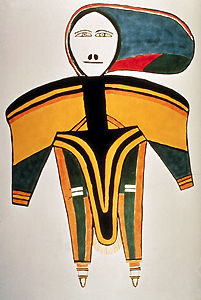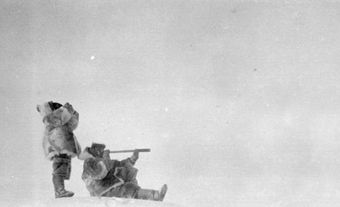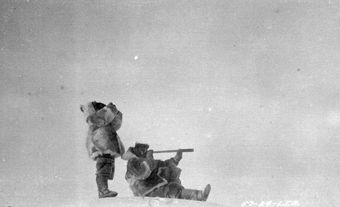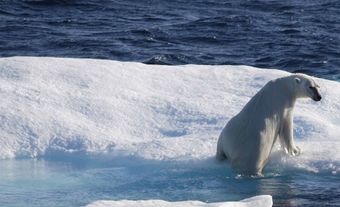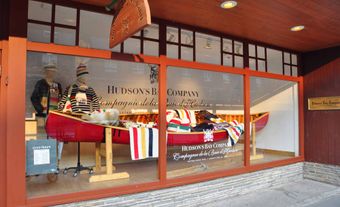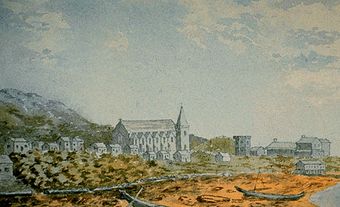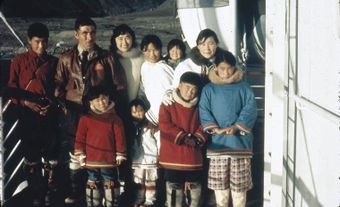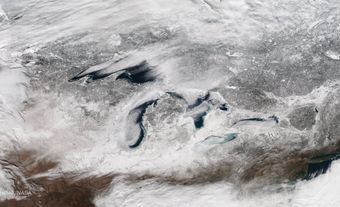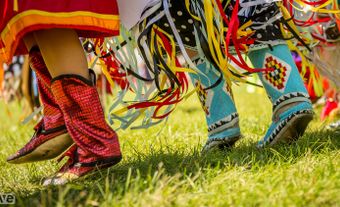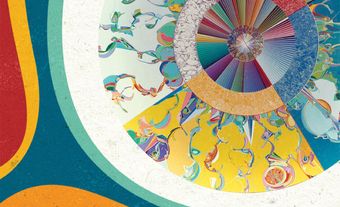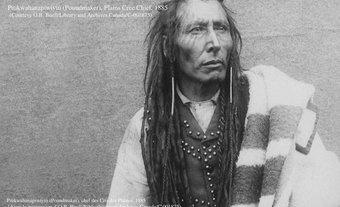Baker Lake (a.k.a. Qamani’tuaq), Nunavut, incorporated as a hamlet in 1977, population 2,069 (2016 census), 1,872 (2011 census). The hamlet of Baker Lake is located at the northwest end of Baker Lake, about 280 km west of the mouth of Chesterfield Inlet on Hudson Bay. The community is approximately at the geographic centre of Canada. Baker Lake is the only inland Inuit community in Nunavut.
History
The people of Baker Lake, the Kivallirmiut, traditionally depended on caribou and fish of the interior rather than on the sea mammals that sustain other Inuit groups. The Baker Lake area is a traditional summer gathering place for the Kivallirmiut. Their winter hunting grounds were located up the area’s river systems.
The first European explorer to arrive in the Chesterfield Inlet area was Sir Thomas Button in 1612. In 1762, Captain William Christopher of the Hudson’s Bay Company sailed up Chesterfield Inlet to Baker Lake, which he named after company governor Sir William Baker.
The Kivallirmiut’s contact with traders continued into the early 20th century. Missionaries also came to the region in these years. European diseases, combined with famine due to dwindling caribou herds, killed much of the local Inuit population. In the 1950s, the federal government forced the Kivallirmiut to move into government-built homes at the current site of the hamlet.
Did you know?
Officially, the reason the federal government relocated the Kivallirmiut was to save them from famine. But many Inuit believe that the real reason for the relocations was to populate — and thereby claim — areas of the North for Canada. Communities were separated in the process, and many Inuit died during these relocations. (See also Inuit High Arctic Relocations.)
Baker Lake developed rapidly after the Second World War, when it was an advance base for the Canadian Army’s “Operation Muskox” snowmobile expedition. In the late 1970s, the hamlet made national headlines in a landmark Indigenous rights court case, when its residents contested the right of companies to mine uranium in the area.
Economy
Today, the economy of Baker Lake is a mix of traditional resource harvesting and other activities, such as mining and arts and crafts. The Meadowbank gold mine, which opened 110 km north of Baker Lake in 2010, has been an important source of jobs for the community.
Cultural Life
Baker Lake has been home to a number of renowned printmakers, including Jessie Oonark and Luke Anguhadluq. Notable carvers associated with Baker Lake include Vital Makpaaq and David Ekoota Ikutaaq. The Jessie Oonark Centre studio and shop features printmaking, carving, jewellery and textiles. (See also Inuit Printmaking: Baker Lake; Inuit Art).
The Baker Lake area offers opportunities for ecotourism and outdoor activities. These attractions include tundra ecosystems, diverse wildlife and the Kazan and Thelon rivers, part of the Heritage Rivers System.

 Share on Facebook
Share on Facebook Share on X
Share on X Share by Email
Share by Email Share on Google Classroom
Share on Google Classroom

